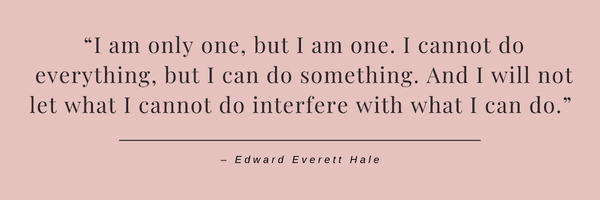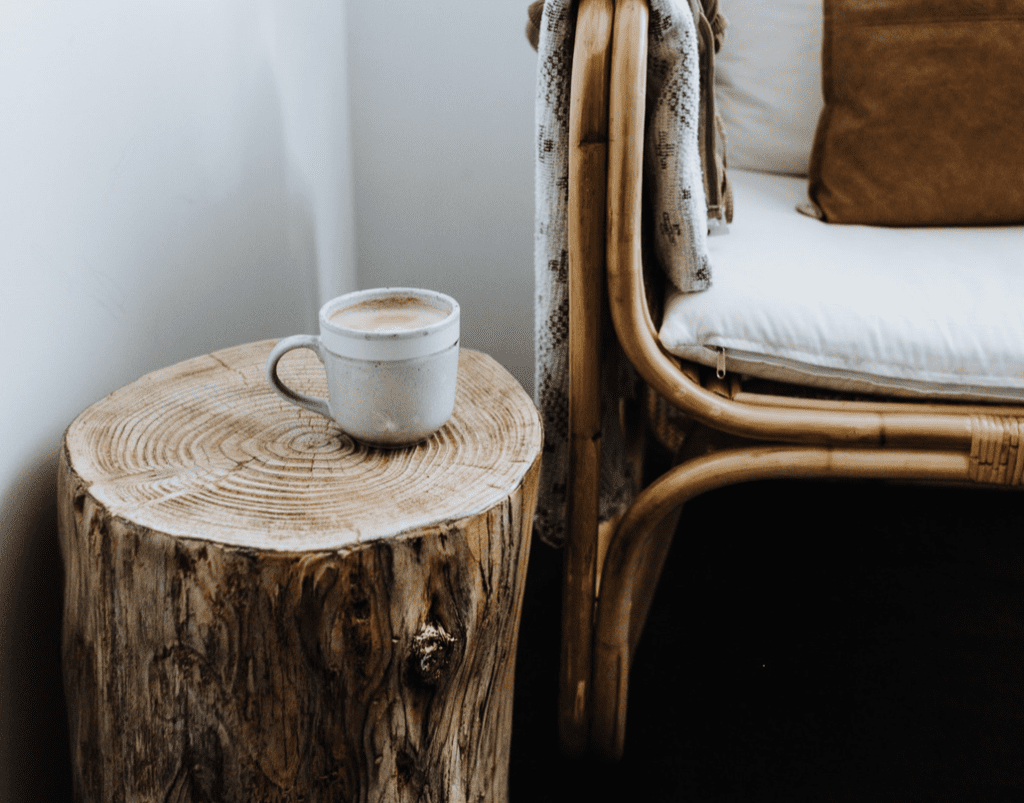In this post: We talk about why we need to follow the lead of the fashion industry and focus on slow interior design, slow homes, and slow furniture.
First came fast fashion, an evolution that dramatically cut the time from runway to shopping mall and gave us quick access to trendy, knock-off clothing. Like Freshman at a frat party we binged on easy access and then felt the inevitable hangover. Our closets became full of clothes thoughtlessly added, and rarely – if ever – worn. This has meant more for us to warehouse in our homes, and more demand for cheap materials, cheap labor, and the challenges these bring with them.
We certainly haven’t solved our fast fashion addiction, but you’d be hard pressed not to know there is a problem or be aware that a slow fashion movement is afoot. Icons like Stella McCartney are making headlines with pledges to improve the way their clothes are produced and there’s hope that this type of thinking will become mainstream.
The morning after for interior design
It’s taken a little longer, but we’ve reached the morning after for interior design. The realization that the items we use to furnish and decorate our homes can negatively contribute to environmental and social problems is dawning on many of us.
Much like fast fashion made it easier to fill our closets, fast furniture has made it easier for us to fill our homes with inexpensive, trendy, temporary items. As we quickly use up and spit out furniture that wasn’t made to last, we’re feeling the consequences.
According to EPA estimates, Americans are producing:
- 4x more furniture waste versus 50 years ago
- 4x more small appliance waste versus 30 years ago
- 2x more carpet and rug waste versus 30 years ago
As these stats suggest, we can’t go on like this forever.


Slowing down
There’s this thing called mindfulness that’s been hard to avoid lately. People are realizing that something has gone terribly wrong with the speed and instant gratification of our lives. When it comes to consumption, we’re on autopilot.
Beyond the untenable physics of the situation, there’s the way it makes us feel. Our unprecedented ability to have exactly what we want, the moment we want it brings a temporary high, followed by a huge physical and mental burden. Museums have curators to manage their collections; what are we to do when our homes become warehouses for the artifacts of our fleeting desires?
Choice got us into this mess and just maybe it can get us out
Within the past few years, there has been a birth of new companies making furniture and home goods that consider their sustainability, at prices that are more mainstream. We’ve also seen some bellwether brands differentiate themselves by striving to do better in how they source, create, and distribute their products. Even IKEA, who is arguably the OG of fast furniture, is shaping up.
What we can do - supporting a slow interior design movement
Our job is to show these brands that their efforts are not in vain, and that we will support their sustainability efforts with our dollars. This is not to say that you should run out to IKEA and buy a bunch of junk right now. Rather, when the time has come for you to furnish your home or replace a piece of furniture, consider doing it mindfully.
Don’t buy the cheapest thing that meets your immediate need but instead consider slow interior design. Before buying, learn more about how an item was made, if that process aligns with your values, and if that piece will meet your needs in the future. And while you’re at it, consider if a vintage piece could meet your need, or if you could support a local artisan.
It’s hard to know if the brands investing in sustainability are doing so out of genuine concern or a test of market appeal. I tend to believe most people are good and want to work for companies trying to do right in the world. Either way, though, it makes it a lot easier for corporations to act responsibly if it continues to be profitable. It may not seem like our individual household can make a difference but each dollar we spend is ultimately a vote for the world we want for ourselves and future generations.


Ideas for slow interior design: how to embrace this movement in your home
Acting sustainably can feel overwhelming, but here are some ideas that may help you approach slow interior design.
1. Resist the design blitzkrieg urge
It’s hard to thoughtfully decorate every room in your house, all at the same time. If you can find a way to prioritize and focus, it makes the task of considering what you need more manageable and buying something with longevity more possible. When moving into a new home, slow decorating gives you the chance to see how you live in your space before spending a lot of money. I almost always discover that the ideas I had when I first moved into a space are not the ones that stood the test of time.
2. Banish perfectionism
Easier said than done for 100% sure.
We need to ask ourselves who we are designing for. The odds that Harry and Meghan are coming to dinner are slim. What’s a lot more likely is entertaining friends and family with casual lifestyles similar to ours (and love us no matter what, right?). So why the pressure for perfection? Let's focus more on enjoying our guests than appearing perfect to them.
3. See what you can find secondhand
This tip isn’t for everyone. I have a theory that some people just enjoy the thrill of the hunt and some are overwhelmed by the chaos. I am a thrill-of-the-hunt kind of girl and find that the process of finding a one-of-a-kind item is a lot more satisfying than picking something readily available in a catalog. If you feel this way, lean into it and use your talent to create a unique, slow interior for yourself.
4. Know your neighbors
I was lucky enough to grow up in Amish country Pennsylvania where carpenters abound. It was really cool to see the creativity of people who have spent their lives perfecting their craft. Chances are you have some really creative individuals within driving distance of where you live. Wouldn’t it be cool to support some folks right in your community?
5. Enjoy the process of slow interior design
Even if you can’t stand the idea of a second-hand furniture hunt, the process should be fun. If I’m being honest with myself, the planning and anticipation are actually a good chunk of the enjoyment I get out of most things. (vacations, parties, decorating…) If I can remember that even though I think that instant gratification is going to make me happy, it’s circumventing a lot of the actual fun stuff, it helps me to slow my roll.
6. It’s okay if your home is not “done”
If you’re addicted to home decorating magazines and blogs like so many of us, you may suffer from the delusion that every room in most people’s homes is perfectly decorated and ready for a photography crew to show up. I don’t have any official data here, but my straw poll suggests that this is rarely the case.
7. Remember that speed now can be a speed bump later
It’s amazing the speed at which our houses fill up with junk. The easy yes now often results in needing to use precious free time to declutter later. Putting the brakes on may just make life a little easier down the road. Plus, you'd be surprised how much more stylish an uncluttered home can be.
8. Don't worry about the Joneses
If you've set your sites on slow interior design, you're going to be prioritizing differently than some other people you know. Remember why you're taking the slow interior route and don't worry about the path that other's have chosen.
Related movements to know
What is the slow home movement?
The slow Interior Design Movement and The slow Home Movement share many of the same principles and values, but they differ a bit in their scope.
Like slow interior design movement, the slow home Movement promotes sustainable, simple, and thoughtful home design, the importance of quality, natural materials, energy efficiency, and healthy indoor environments. The slow home movement, however, is concerned with the design and construction of the entire home and not just its contents. In essence, the slow home movement is a holistic approach to home design and construction, while slow interior design is more focused on the decor of individual spaces within a home and their aesthetics and functionality.
Because The Home Green is primarily focused on interior design, we tend to think of sustainability through this lens but encourage anyone approaching a new construction project to consider the principles of The slow home movement.
What is the slow furniture movement?
Who knew there were so many slow movements? I love it! The slow furniture movement is certainly a part of slow interior design and emphasizes the importance of thoughtful, sustainable, and durable furniture design.
The slow furniture movement advocates for furniture that is designed and constructed to last, using high-quality materials and traditional craftsmanship techniques. It promotes the use of natural materials, such as wood and leather, and encourages furniture designers to prioritize function, comfort, and durability over style and trendiness.
The importance of ethical and sustainable manufacturing practices is also stressed in The slow furniture movement. It calls on furniture makers to use locally sourced materials, reduce waste and energy consumption during the manufacturing process, and pay fair wages to workers. By promoting slow furniture design, the slow furniture movement aims to create furniture that is not only beautiful and functional but also sustainable and socially responsible.
I'd also urge you to consider vintage furniture as part of the slow furniture movement. While not all vintage furniture would meet the requirements of the slow furniture movement today, choosing something that already exists is certainly a sustainable choice. Often, vintage pieces can be repaired or refreshed with a coat of stain or paint to create a unique piece for your home.
What is the slow living movement?
Of all of the slow movements outlined here, the slow living movement is perhaps the oldest and most holistic. It emerged in the 1980s as a reaction to the fast-paced, consumerist culture and has become popular in recent years. Slow living is about simplifying life, reducing environmental impact, and supporting local communities.
There are many approaches to slow living including embracing a minimalist lifestyle or a focus on staying mentally present. Regardless of the specifics, the slow living movement rejects the idea that faster and more is better, and instead finds fulfillment in a more intentional, sustainable, and mindful way of living
Free tips and inspiration in your inbox
Enter your email address below to receive the latest news from The Home Green.





👏👏👏